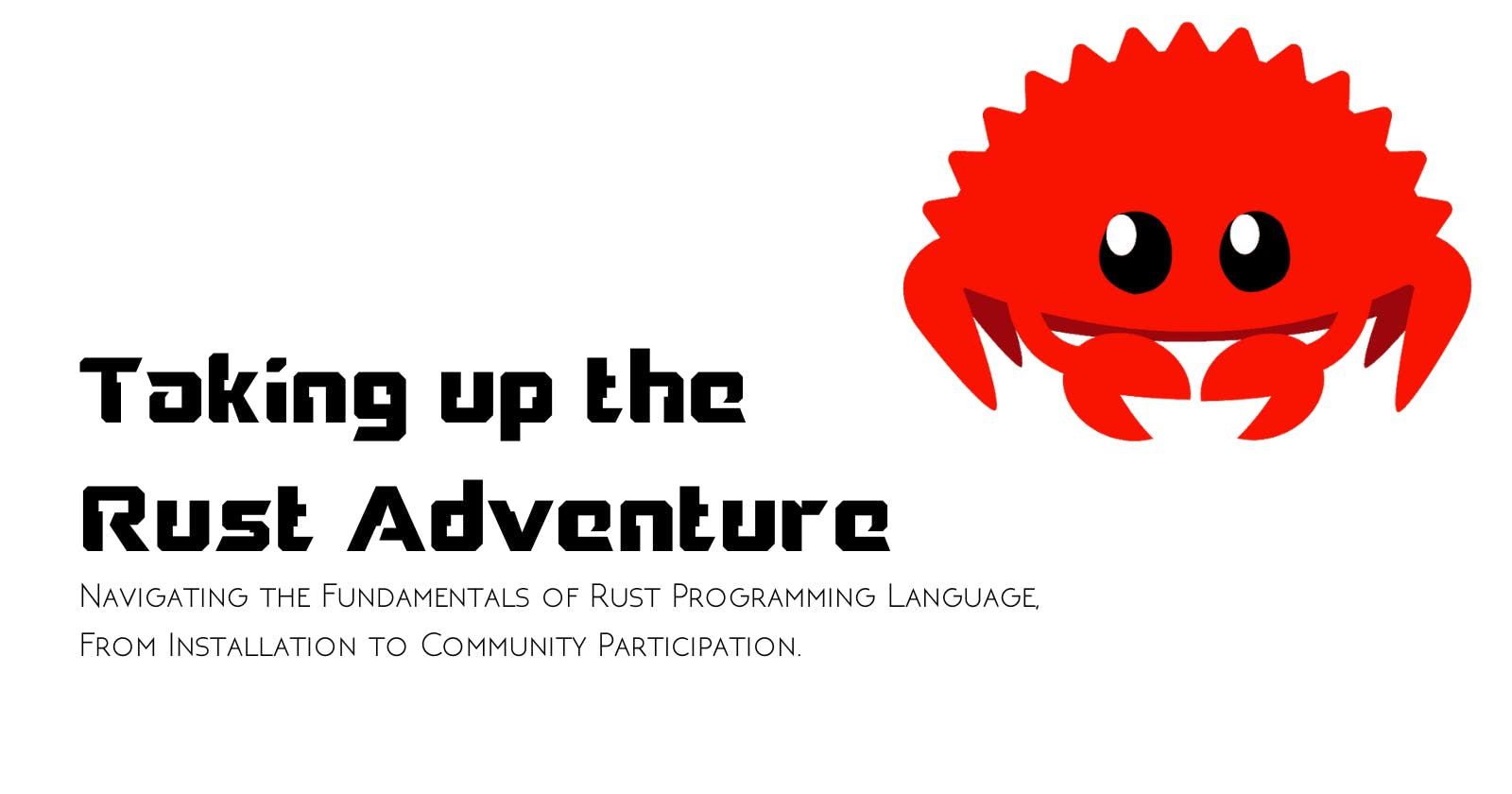Taking up the Rust Adventure: A Concise Guide for Beginners
Navigating the Fundamentals of Rust Programming Language, From Installation to Community Participation.
When it comes to learning a new programming language, Rust can be a great choice for those who are looking for a language that prioritizes safety and performance. This systems programming language, first released in 2010, has gained a lot of popularity in recent years for its unique approach to memory management and error handling. In this article, we will cover the basics of Rust and provide a step-by-step guide for getting started with this powerful programming language.
First, let's take a look at some of the key features of Rust that make it stand out from other languages. One of the biggest advantages of Rust is its focus on safety. The language is designed to prevent common programming errors such as null pointer dereferences and buffer overflows, which can be a major source of security vulnerabilities. This is achieved through a combination of static type checking, an ownership model that prevents data races and other concurrency-related bugs, and a borrow checker that ensures that references to data are valid.
Another key feature of Rust is its performance. The language is designed to be fast and efficient, which makes it well-suited for a wide range of applications, from web development to embedded systems. Rust also has low-level control over the system, which can be used to create high-performance libraries and systems.
Now that you understand some of the key benefits of Rust, let's take a look at how to get started with the language.
Install Rust
The first step in getting started with Rust is to install the language on your computer. The easiest way to do this is to download and install the Rustup tool, which will manage the installation of Rust and its dependencies. Once Rustup is installed, you can use it to install the latest version of Rust by running the following command:
rustup install stable
Learn the basics of the language
Once you have Rust installed, the next step is to learn the basics of the language. There are many resources available to help you get started, but one of the best places to start is the Rust documentation, which provides an in-depth guide to the language and its features. Additionally, the Rust Programming Book is a great resource for learning the basics of the language.
Practice writing code
Once you have a basic understanding of the language, the next step is to start writing code. One of the best ways to learn a new language is to practice writing code; many resources are available to help you do this. Some popular resources include Rustlings, which is a set of small exercises to help you get started with the language, and Rust by Example, which provides a collection of examples that demonstrate various features of Rust.
Participate in the Rust community
Finally, one of the best ways to learn Rust is to participate in the Rust community. The Rust community is very active and welcoming, and there are many resources available to help you get started, including the Rust programming subreddit, the Rust user forums, and the Rust programming Discord server.
In conclusion, Rust is a powerful and efficient systems programming language that is designed to be fast, safe, and concurrent. Its focus on safety and performance makes it a great choice for a wide range of applications, from web development to embedded systems. Whether you're a seasoned programmer or just getting started, Rust is a language worth learning. With the help of this guide, you'll be able to start learning Rust and begin building powerful, efficient applications in no time.

